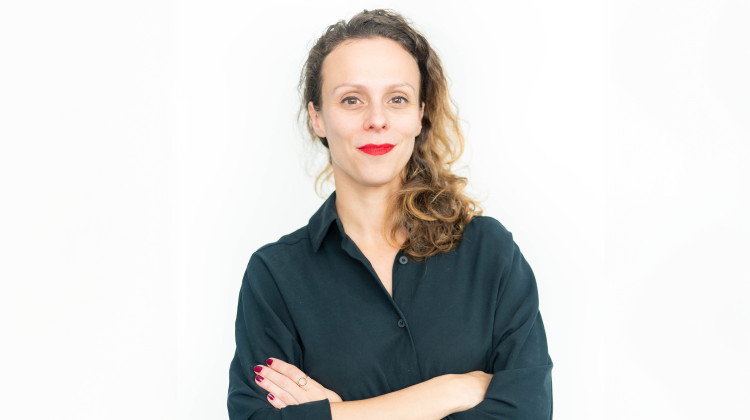Florence Guiraud

Architecture is one of the most robust educations in design you can get—it teaches you rigor and problem-solving, skills that transfer to many fields.
What is your career story? How did you get where you are today?
After graduating from MIT with my MArch, I found myself at a crossroads. I was 30 or 31, tired of Northeast winters, and trying to figure out where I wanted to live and what lifestyle I wanted. I interviewed for jobs across Boston, New York, DC, and Chicago, questioning what kind of architecture I wanted to pursue.
A pivotal moment came when a friend asked me to join her on a cross-country road trip. She was moving to Southern California with her husband and needed someone to drive with her. I ended up staying with her in Orange County for a couple of weeks. It was December, warm outside, and we were eating tacos—it felt like paradise. I decided then and there that I wanted to move to LA.
I stayed with another MIT friend in LA who worked for a sports architecture firm. They were hiring, and I had experience from my time at SOM working on a New York Jets training facility. I got the job and learned a lot about stadiums, though I found myself as the only woman in a male-dominated environment.
Navigating the sports architecture world was challenging. I made sure to be honest about what I did or didn’t know, and I had an incredible mentor—a senior project architect—who taught me so much. Over time, the firm hired more women, but the sports industry remained male-dominated, and it often felt like a minefield.
I eventually moved to frog, a firm known for industrial and experience design. They had just started an architecture group, and I consulted with them before joining full-time. Frog’s approach to projects, starting with design research and qualitative interviews, was refreshing. We focused on understanding the behaviors and needs of users to inform our decisions, which allowed us to validate our designs based on real insights.
I stayed at frog for 7-8 years, thriving in the concept design and consulting work. When mergers and acquisitions led to the closure of the practice, I joined Walmart to help build a similar design group. It’s been fascinating working at such a massive scale—Walmart has 10,000 stores and 1-2 million employees. But it’s also a challenging environment for introducing new ideas, as leadership isn’t always aligned with architectural priorities or methodologies.
Now, I’m considering my next steps. I’d like to pivot into hospitality, particularly in designing spaces for older adults and people with disabilities. Understanding and improving the experiences of people navigating spaces differently—whether in a wheelchair or as someone who is blind—is something I’m passionate about.
What were the biggest skills/mindsets/approaches you took away from your architecture education?
One of the most valuable things I learned, both in school and early in my career, was developing a holistic view of projects. It’s not just about the building—it’s about the building within its environment. That ability to shift lenses between details and the big picture has been essential.
Networking and connecting with people were also incredibly important. At MIT, I was surrounded by brilliant minds, and learning from them helped me grow tremendously. MIT taught me resilience. It’s not just about architecture—it’s about the mindset. Life will throw you curveballs, and you have to adapt. That “figure-it-out” attitude, combined with an insatiable curiosity, is something I carry with me to this day.
Can you give me an example of when you’ve used this mindset?
At Walmart, I’ve faced many challenges, especially when people told me “no.” These weren’t “no’s” because solutions were impossible but because of budgets or lack of understanding. My values center on finding solutions and highlighting the importance of good design. Occasionally, I’ve convinced people to see things my way, and those rare moments—where you make someone understand why something matters—feel like real victories.
What do you wish you had learned in your design education?
I wish there had been more focus on design research and empathy—particularly qualitative and ethnographic research. Without that, students can develop inflated egos, thinking they know better than the clients or users they’re designing for.
Architecture isn’t about creating buildings that make bold artistic statements if those buildings don’t function for the people who use them. At the end of the day, a building needs to perform well. It should almost disappear into the background, seamlessly serving its purpose.
Knowing what you know now, would you do undergrad/grad differently?
Not at all! I loved my undergrad experience at Parsons, where I came to architecture from an artistic background. It was hands-on, creative, and rigorous. I transitioned to MIT for grad school during the recession, which brought a unique intensity and focus to the program. It was tough emotionally, but it taught me resilience and how to push through challenges.
What advice do you have for students starting out in design?
Don’t take yourself—or anything—too seriously. Find your passion, dive down that rabbit hole, and use the resources at MIT to learn everything you can about it.
Put your health first. Architecture can be consuming, but it’s important to prioritize your well-being. If you find that architecture isn’t for you, know that it’s okay to pivot. Architecture is one of the most robust educations in design you can get—it teaches you rigor and problem-solving, skills that transfer to many fields.
Good luck! Welcome to the crazy world of architecture. It’s a unique ride, but you’ll be okay.


